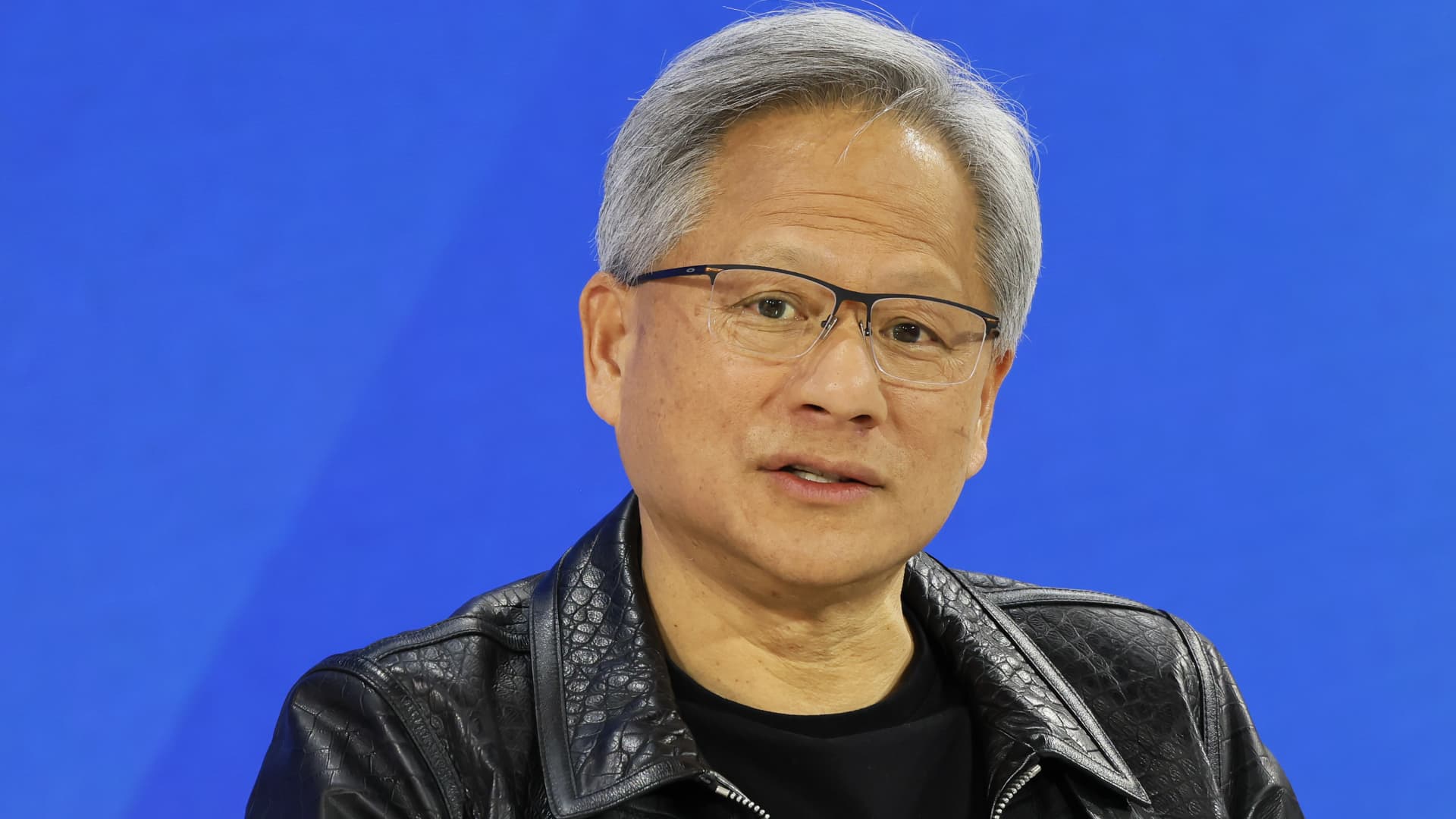
Nvidia CEO Jensen Huang said Wednesday that artificial intelligence is gaining on humans.
Speaking at The New York Times’ annual DealBook summit, Huang said that if artificial general intelligence (AGI) is defined as a computer that can complete tests in a “fairly competitive” way to human intelligence, then “within the next five years, you’re going to see, obviously, AIs that can achieve those tests.”
Nvidia’s business is booming because of the surge in demand for high-powered graphics processing units (GPUs) that are needed to train AI models and run hefty workloads across industries like automotive, architecture, electronics, engineering and scientific research as well as for OpenAI’s ChatGPT.
Revenue in Nvidia’s fiscal third quarter tripled, while net income climbed to $9.24 billion from $680 million a year earlier.
In the interview Wednesday, Huang recalled delivering “the world’s first AI supercomputer” to OpenAI, after Elon Musk, who co-founded the AI project before departing it in 2018, heard Huang speak about the device at a conference.
“Elon saw it, and he goes, ‘I want one of those’ — he told me about OpenAI,” Huang said. “I delivered the world’s first AI supercomputer to OpenAI on that day.”
Regarding the recent chaos surrounding OpenAI, its board structure, and the ousting and subsequent reinstatement of CEO Sam Altman, Huang said he hoped things were calming down.
“I’m happy that they’re settled, and I hope they’re settled — it’s a really great team,” Huang said. “It also brings to mind the importance of corporate governance. Nvidia is here 30 years after our founding, we’ve gone through a lot of adversity. If we didn’t set up our company properly, who knows what would have been.”
Huang predicted that competition in the AI space will lead to the emergence of off-the-shelf AI tools that companies in different industries will tune according to their needs, from chip design and software creation to drug discovery and radiology.
Huang was asked onstage to rank the success of various companies in the AI market.
“I’m not going to rank my friends,” he said. “I’ll admit it, I want to, but I’m not going to do it.”
One reason the tech industry is still years away from AGI, Huang said, is that although machine learning is currently skilled at tasks like recognition and perception, it can’t yet perform multistep reasoning, which is a top priority for companies and researchers.
“Everybody’s working on it,” Huang said.
And the technology is moving forward very quickly.
“There’s no question that the rate of progress is high,” Huang said. “What we realize today is that of course, what we can do today with these models and intelligence are related, but not the same.”
WATCH: Nvidia CEO says U.S. chipmakers at least a decade away from China supply chain independence
Don’t miss these stories from CNBC PRO:
- The S&P 500 is starting to form a ‘cup and handle’ pattern. How to watch for the potential breakout ahead
- Bank of America sees the S&P 500 rising to 5,000 next year, anticipates a ‘stock picker’s paradise’
- Morgan Stanley is bullish on this emerging AI trend — and names 6 stocks to play it
- These are Wall Street’s favorite Warren Buffett stocks




